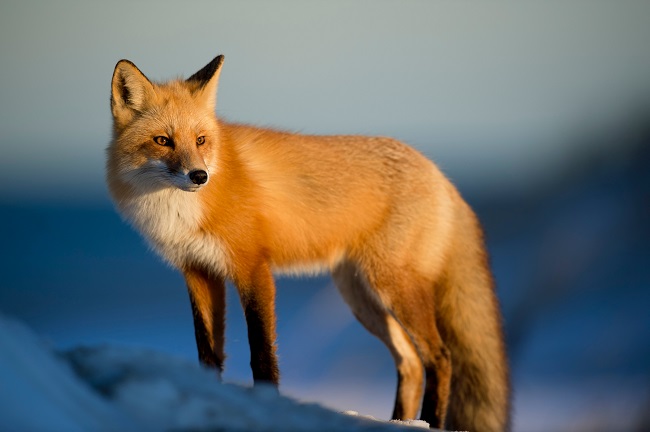
The red fox, scientifically known as Vulpes vulpes, is one of the most widely recognized and adaptable mammals in the animal kingdom. This charismatic and cunning creature has captured the imaginations of people around the world for centuries, and it plays a significant role in the ecosystems where it resides. In this article, we will delve into the native territories of the red fox and explore its vital role in maintaining the balance of various ecosystems.
Native Territories
The red fox’s native range spans across the Northern Hemisphere, making it one of the most widely distributed terrestrial mammals. These remarkable creatures are native to North America, Europe, Asia, and even parts of North Africa. They have successfully adapted to a wide range of environments, from the Arctic tundra to the scorching deserts of the Middle East.
In North America, red foxes are found from the Arctic tundra of Alaska to the dense forests of the eastern United States. In Europe, they inhabit a broad range of habitats, from the rugged landscapes of Scandinavia to the rolling hills of the British Isles. In Asia, red foxes can be found from the Siberian taiga to the Himalayan mountains. Their ability to thrive in such diverse environments is a testament to their adaptability and resourcefulness.
Role in the Ecosystem
The red fox plays a crucial role in the ecosystems it inhabits, acting as both a predator and a scavenger. Here are some of the key roles it plays:
Predator: Red foxes are skilled hunters with a diverse diet. They primarily feed on small mammals, such as rodents, rabbits, and birds. Their hunting prowess helps control populations of these animals, preventing them from overgrazing vegetation and damaging local habitats. This predation also keeps in check the spread of diseases that can affect these smaller mammals.
Scavenger: Red foxes are opportunistic feeders and will scavenge on carrion, insects, and even fruits when available. By consuming carrion, they help clean up the environment by recycling nutrients and reducing the risk of disease outbreaks from decaying carcasses.
Seed Dispersal: Red foxes unintentionally aid in seed dispersal by consuming fruits and berries. As they move from place to place, these seeds pass through their digestive systems and are deposited in different locations, helping to regenerate plant populations and maintain biodiversity.
Regulation of Smaller Predator Populations: Red foxes are known to compete with and sometimes prey upon smaller predators like raccoons and skunks. This competition helps maintain a balance among predator populations and prevents any one species from dominating an ecosystem.
Indicator Species: The presence of red foxes in an ecosystem can be an indicator of its overall health. A thriving red fox population suggests a well-functioning ecosystem with abundant prey species and suitable habitat.
Conservation and Challenges
Despite their adaptability and wide distribution, red foxes face several challenges, including habitat loss due to urbanization and agricultural expansion. They are also susceptible to diseases like rabies and canine distemper. In some areas, they may face persecution due to conflicts with livestock or poultry farming.
Conservation efforts aim to strike a balance between human activities and the preservation of red fox populations. It’s essential to protect their natural habitats and minimize human impact on their territories to ensure their long-term survival.
Conclusion
The red fox is a remarkable and highly adaptable species that has successfully carved out a niche in ecosystems around the world. Its role as a predator, scavenger, and seed disperser contributes to the overall health and balance of these ecosystems.
Related Articles & Free Email Newsletter Sign Up
Meet the World’s Largest Reptile: The Saltwater Crocodile
The Majestic Canada Goose: A Marvel of Migration and Adaptation




Comment here